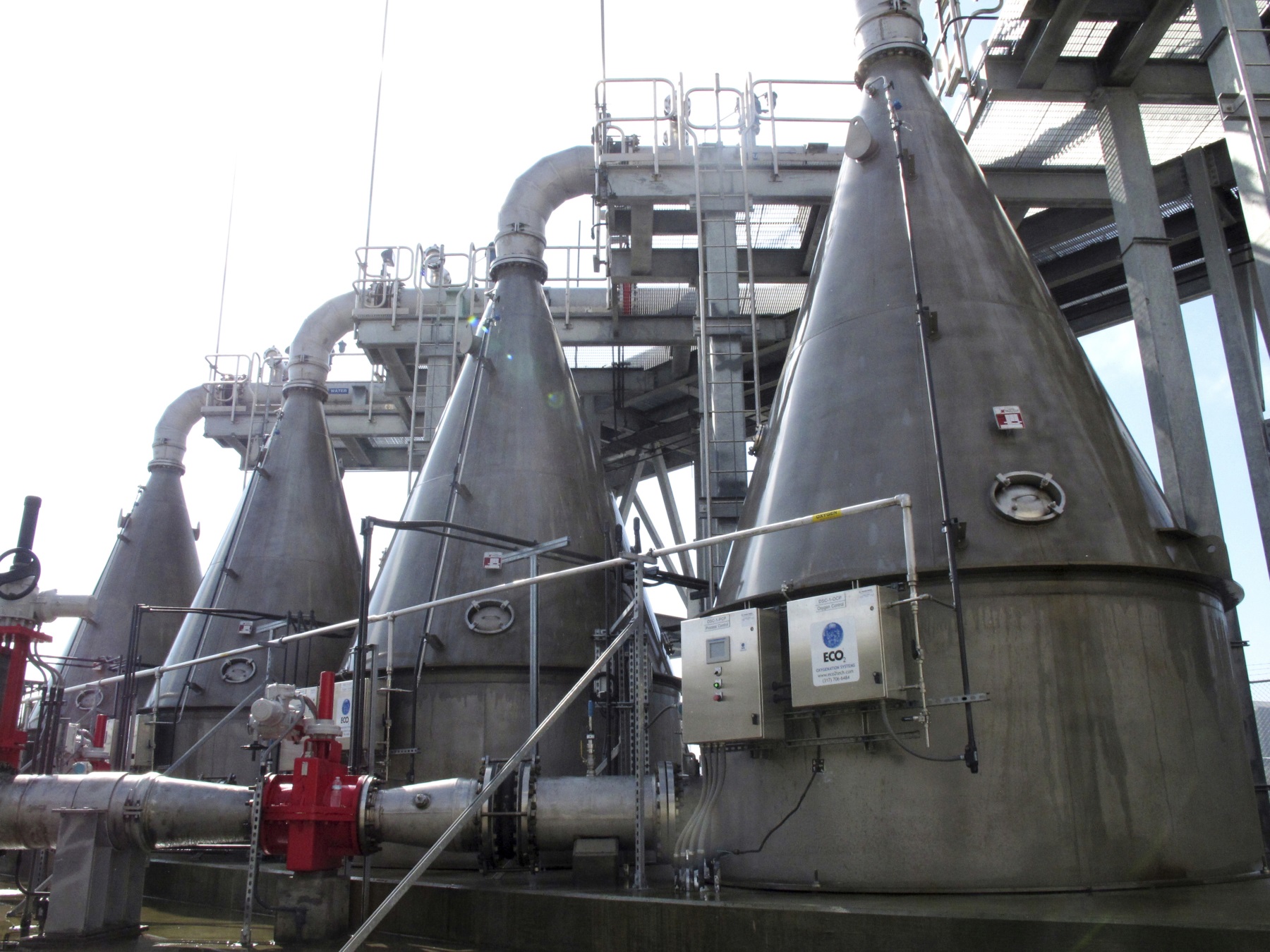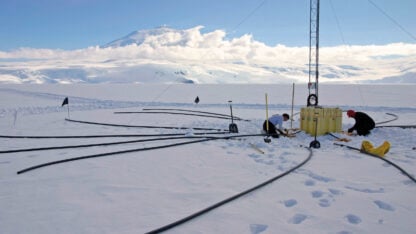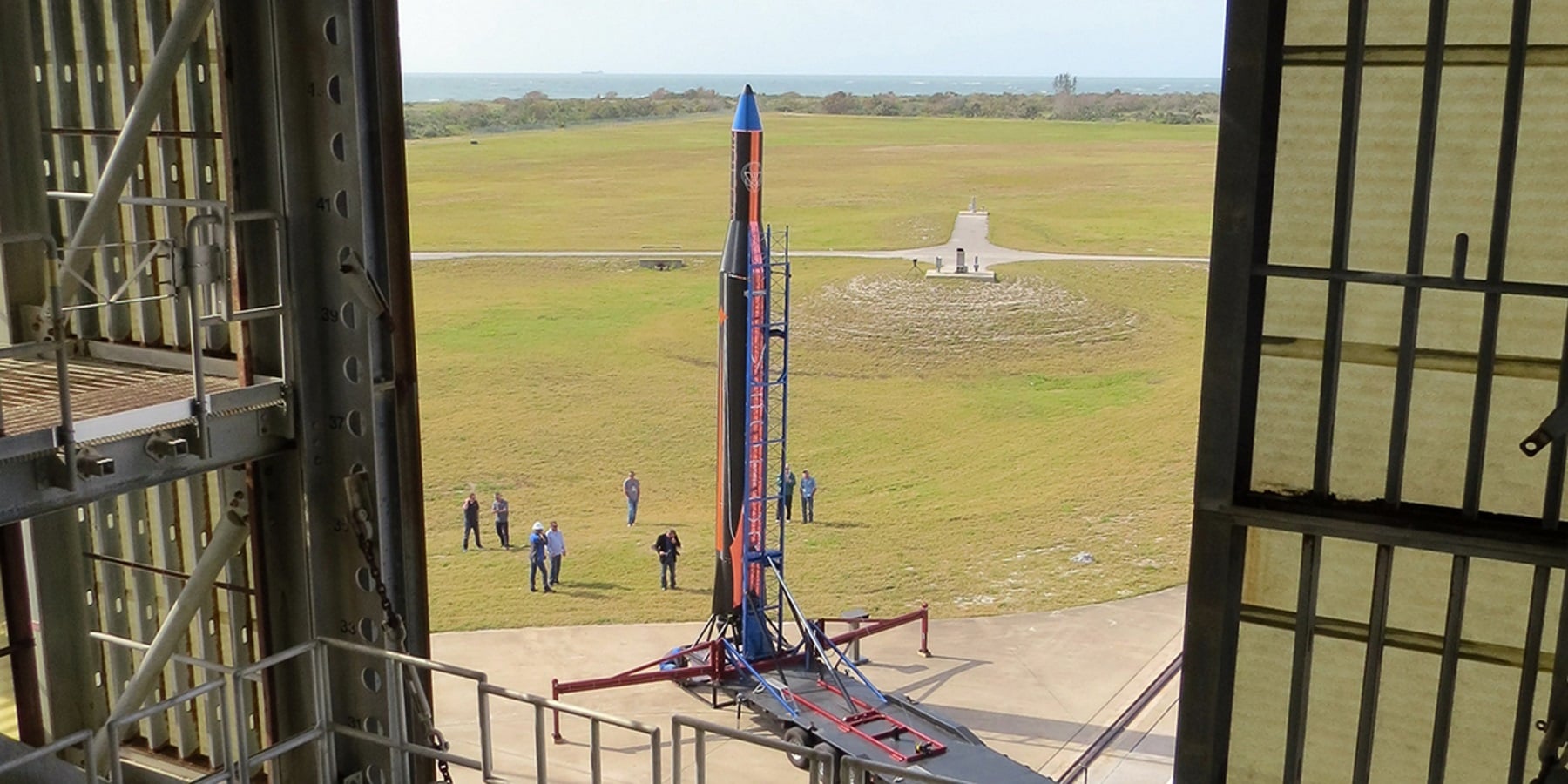Conservation Groups ‘Skeptical’ Of Savannah Harbor Oxygen Injector Test

Four cone-shaped machines designed to mix oxygen into river water and inject it back into the Savannah River are shown earlier this year on the shore of the waterway. Conservation groups say they “remain skeptical” the machines will offset threats to fish caused by deepening the busy shipping channel, but their attorney says they won’t return to court to fight the $973 million expansion.
Russ Bynum / Associated Press file
Conservation groups “remain skeptical” that machines injecting oxygen into the Savannah harbor will offset threats to fish caused by deepening the busy shipping channel to the Port of Savannah, but they won’t return to court to fight the $973 million project, according to the environmental groups’ attorney.
The Southern Environmental Law Center submitted its response Friday to a two-month test run the Army Corps of Engineers conducted to show it could mechanically replace a small loss of dissolved oxygen in the stretch of the Savannah River being deepened to make room for larger cargo ships.
“Overall, it appears that the Test Run report shows that the Oxygen Injection System is capable of delivering oxygen to the river,” law center attorney Chris DeScherer said in a letter to the Army Corps. “However, we remain skeptical that the System will effectively work in perpetuity to mitigate for the impacts of the project.”
The Army Corps is spending $100 million to build a pair of stations on the river equipped with large machines that suck in water, swirl it with oxygen pulled from the air and inject the mixture back into the river. The agency plans to run the oxygen injectors indefinitely, roughly from June through September each year when summer heat can cause dissolved oxygen levels in the harbor to drop below minimum standards set by Georgia and South Carolina.
The agency estimates it will cost $3 million per year to pump extra oxygen into the waterway shared by Georgia and South Carolina, which is home to endangered shortnose sturgeon as well as species including striped bass and blue crabs.
A 2013 court settlement required a successful test before the agency can resume dredging of the 27-mile shipping channel that links the Savannah port to the Atlantic Ocean. The project has been on hold since reaching its halfway point in March 2018.
The Corps declared last month that tests performed between March and May exceeded expectations. It reported the machines pumped roughly 13,300 pounds of oxygen into the river daily, beating its target of 12,000 pounds. And it found that on average 95% of the extra oxygen stayed in the water instead of escaping into the air — compared to an 80% target.
DeScherer noted the tests were performed during the spring, rather than in summer when dissolved oxygen in the river tends to be lower. And the stretch of river where the machines were tested has yet to be deepened. The legal settlement prohibited deepening that portion of the waterway until after the machines were tested.
Conservation groups and South Carolina state agencies had sued the Army Corps in federal court, arguing the harbor expansion would cause irreversible environmental damage. A settlement reached in 2013 stated that the plaintiffs could terminate the deal if the Corps couldn’t prove the oxygen machines worked.
DeScherer’s letter said the environmental groups that sued won’t scrap the settlement despite their doubts about the oxygen machines. The deal included other environmental concessions such as $15 million for wetlands protection and $3 million for monitoring endangered fish species in the river.
It’s not clear what the South Carolina agencies that were part of the lawsuit will do. A spokesman for the state’s Department of Health and Environmental Control did not immediately return an email seeking comment Sunday.








